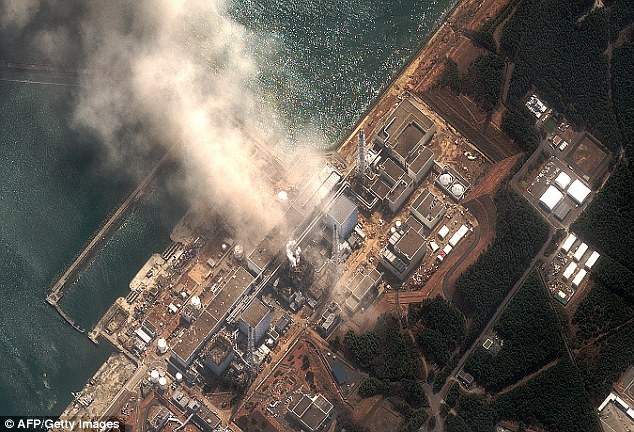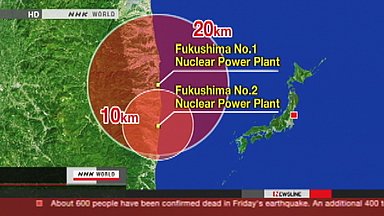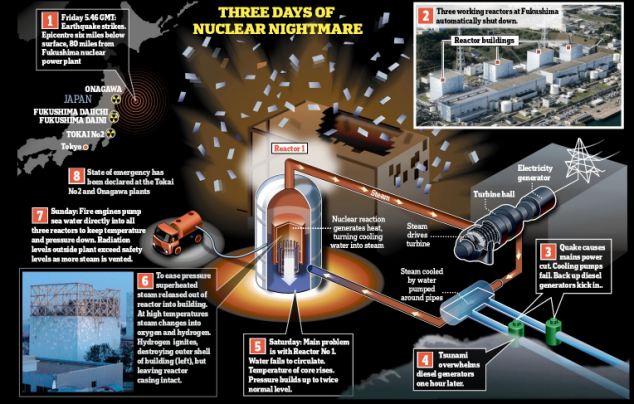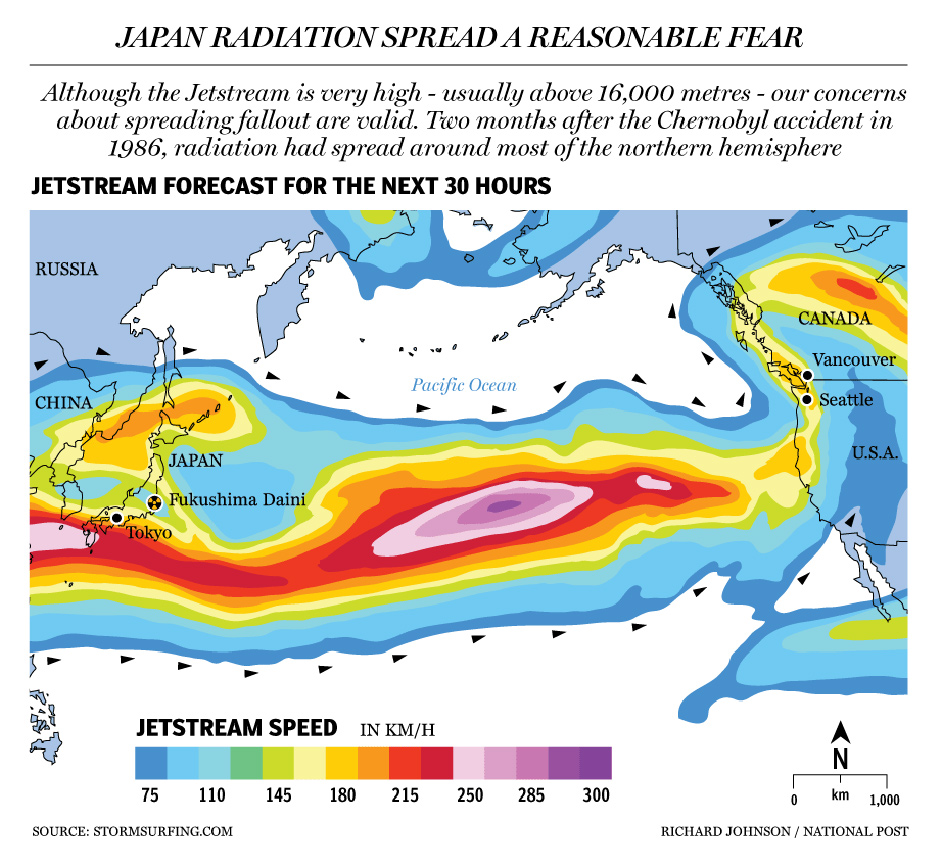NUCLEAR CRISIS WIDENS EVACUATION ZONE
Radiation leakiing from Japan’s earthquake-crippled nuclear plants on Tusday after multiple explosions and fires, and authorities ordered thousands of people to stay inside homes 20/30 kilometers to protect them from exposure.
Emperor addresses nation as nuclear crisis escalates
Japan’s emperor gave a rare address to a jittery nation Wednesday as a nuclear emergency deepened and millions struggled in desperate conditions after last week’s quake and tsunami disaster.
Meltdown’: The Fukushima Daiichi nuclear plant after it was rocked by a another explosion and fires today. Officials later admitted that fuel rods are ‘highly likely’ to be melting in multiple damaged reactors
Thousands of people evacuated from areas around as crippled nuclear power plants were scanned for radiation as reactors loses cooling systems. Japanese authorities struggle to cope with the aftermath of this massive earthquake and tsunami with leaking radiation.
The Institute for Public Accuracy issued the following statement by nuclear expert, Kevin Kamp, about the risk of nuclear disaster in post-Earthquake Japan: “The electrical grid is down. The emergency diesel generators have been damaged. The multi-reactor Fukushima atomic power plant is now relying on battery power, which will only last around eight hours. The danger is, the very thermally hot reactor cores at the plant must be continuously cooled for 24 to 48 hours. Without any electricity, the pumps won’t be able to pump water through the hot reactor cores to cool them. Once electricity is lost, the irradiated nuclear fuel could begin to melt down. If the containment systems fail, a catastrophic radioactivity release to the environment could occur.”
“In addition to the reactor cores, the storage pool for highly radioactive irradiated nuclear fuel is also at risk. The pool cooling water must be continuously circulated. Without circulation, the still thermally hot irradiated nuclear fuel in the storage pools will begin to boil off the cooling water. Within a day or two, the pool’s water could completely boil away. Without cooling water, the irradiated nuclear fuel could spontaneously combust in an exothermic reaction. Since the storage pools are not located within containment, a catastrophic radioactivity release to the environment could occur. Up to 100 percent of the volatile radioactive Cesium-137 content of the pools could go up in flames and smoke, to blow downwind over large distances. Given the large quantity of irradiated nuclear fuel in the pool, the radioactivity release could be worse than the Chernobyl nuclear reactor catastrophe of 25 years ago.”
Kamps is a specialist in nuclear waste at Beyond Nuclear and conducted research last year assessing the state of nuclear facilities in Japan.
Meanwhile, Japan has ordered thousands of residents near a northeastern nuclear power plant to evacuate today following a massive earthquake that caused a problem in the plant’s cooling system via KYODO 
Update
MASSIVE AND DEADLY IS THE CONCERN
“Decontamination is very simple,” says Dr. Eric Toner of the University of Pittsburgh’s Center for Biosecurity, who has studied what might happen in the wake of a terrorist’s “dirty bomb” attack.
“As a rule of thumb, 80 percent of decontamination is removing your clothes,” says Toner, an emergency physician. “And 95 percent is removing your clothes and taking a shower — if possible, shampooing your hair. That’s all that’s involved. No fancy chemicals.”
That’s because radiation is carried on dust particles. “The air isn’t radioactive, but small dust particles are,” Toner explains. “You’re essentially washing off the dust.”
Reservations
Many Japanese have reservations about the ability of authorities to deal with the disaster.
“I can’t trust TEPCO,” said a person with the handle name Tanuki Atsushi on mixi, the Japanese social networking site.
“They should not stop working to limit damage to the public even if this is not going to be a big accident like Chernobyl,” said another user named papa.
The nervous reaction online was a response to the firm’s checkered past. In 2002, the president of the country’s largest power utility was forced to resign along with four other senior executives, taking responsibility for suspected falsification of nuclear plant safety records.
“I don’t think TVs are telling the whole truth,” said Wakaki, the Roppongi bar worker.
“I suspect the real situation is a lot worse, some horrible things are actually happening. TVs are just telling us things to soothe us.”

* Fuel rods appear to be melting inside three over-heating reactors
* Experts class development as ‘partial meltdown’
* Molten fuel could burn through reactor safety shields
* Earlier blast at Fukushima nuclear plant felt 25 miles away
* Eleven workers injured after hydrogen ignited
* 450,000 people have been evacuated from the area
* Engineers desperately trying to cool reactors with sea water
* To many people so far exposed to radiation
Watch Japan Live Streaming
An estimated 48,000 foreign nationals are currently registered as living in disaster-stricken Miyagi, Iwate, Fukushima, Yamagata, Akita and Aomori prefectures
Comments
A new fire was observed Wednesday at the No. 4 reactor and white smoke was visible coming out of the No. 3 reactor later in the day. Chief Cabinet Secretary Yukio Edano said the vapor “is likely to be radioactive and leaking from the containment vessel.”Angered by the television news footage, Chiba said he had given up leaving his shop “because there isn’t enough gas in the car.” “All the children have disappeared from the streets in fear of the radioactivity,” he added.


